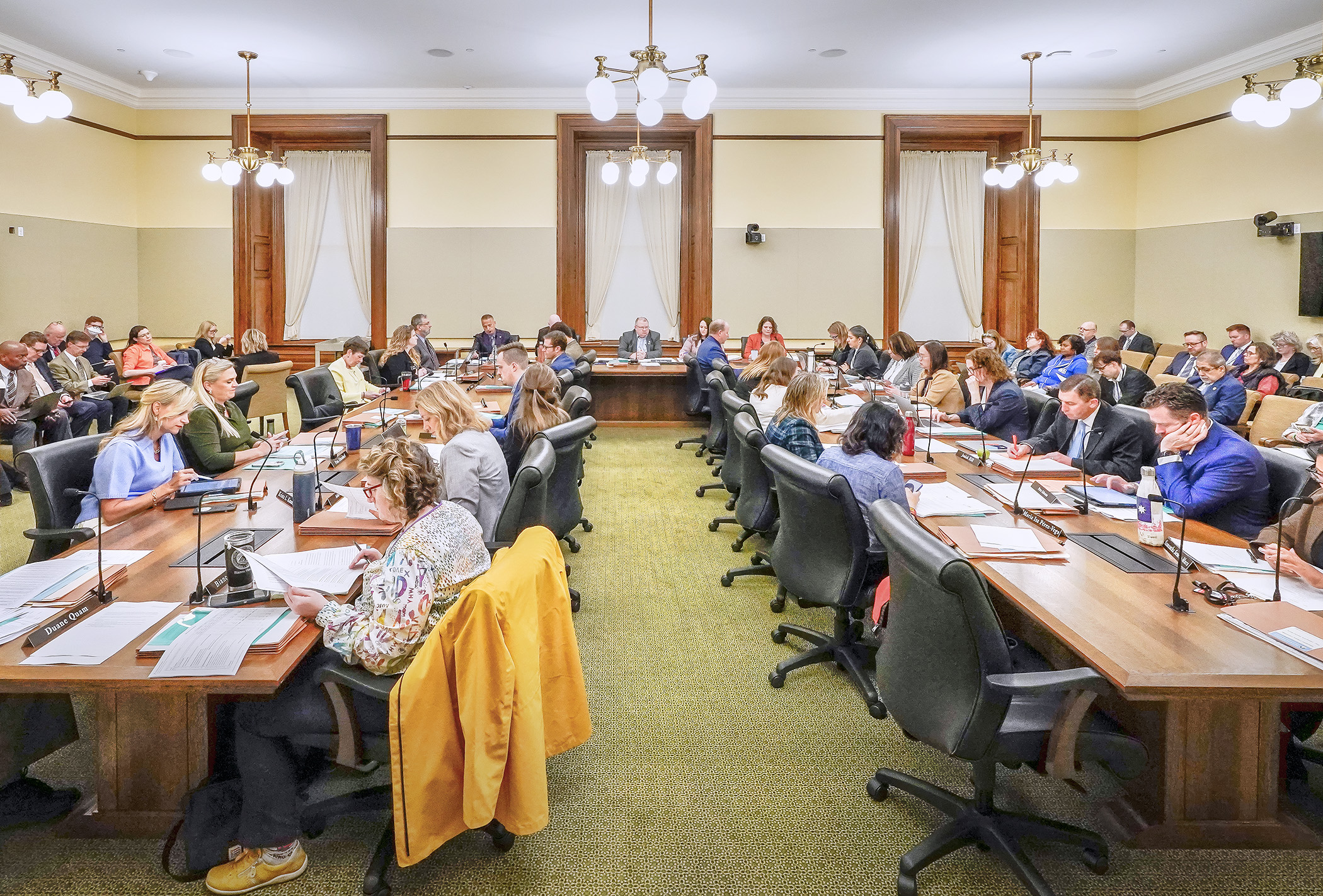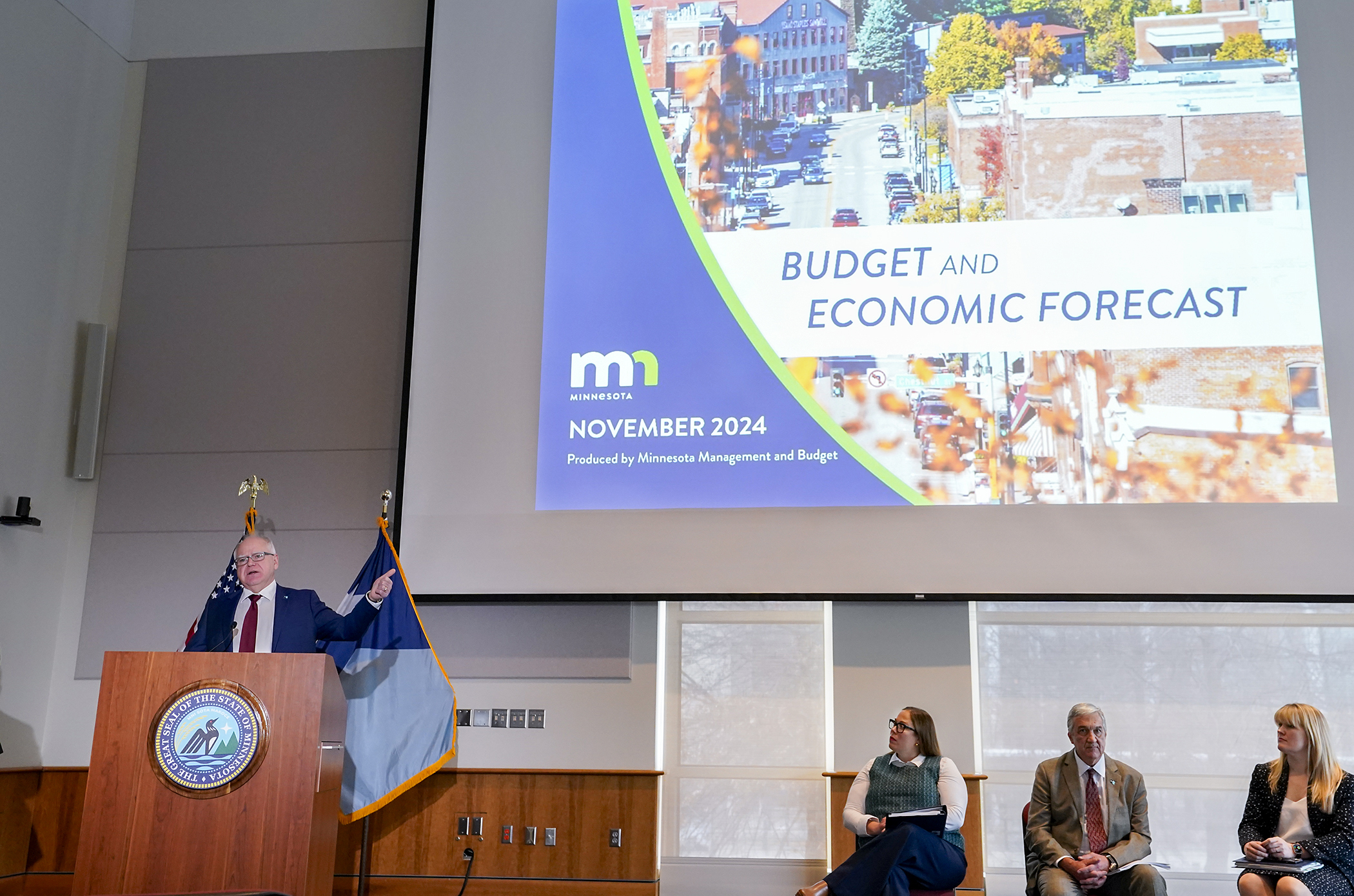Standoff over hourly, temporary school worker benefits could imperil education funding bill

An incomplete grade appears likely when it comes to the already late omnibus education finance bill. A proposal has been introduced more than two weeks past the committee deadline, but a single provision could derail the entire package.
The House Education Finance Committee received a walkthrough of HF1388, as amended, Monday, took public testimony and laid the bill over for future consideration.
Sponsored by Rep. Cheryl Youakim (DFL-Hopkins), the bill would provide a $44.3 million increase over February forecast base for a total budget of almost $25.77 billion in the 2026-27 biennium. It would also make cuts in several areas.
[MORE: View the spreadsheet]
“What we were able to do with this bill is to provide some flexibility and funding streams that the districts have been asking for, while protecting the integrity of what the funding streams were intended to be used for,” said Youakim, who co-chairs the committee with Rep. Ron Kresha (R-Little Falls). “[The bill] reflects a compromise that a dynamic of a tied House required for us to fund our schools.”
Kresha said the bill will allow flexibility for schools to create more jobs for teachers.
“This bill is about local control, funding flexibility and relief from mandates,” he said. “I believe that we still need a strong position for our workers, and putting the money in the basic supplemental aid and giving the districts the ability to extend those jobs and enhance those jobs and find ways for recruitment retention is very valuable.”
Unemployment insurance
A main sticking point between the parties remains: summer unemployment insurance for hourly and temporary school employees.
The bill would fund the program with a one-time $30 million emergency appropriation in fiscal year 2026. School districts would need to provide the funding one year later before the program is eliminated for the 2028-29 school year.
Estimated unemployment aid disbursements for fiscal years 2024 and 2025 are $102 million of the original $135 million allocated for the program. That leaves $33 million in the fund for fiscal year 2026 when estimates for summer-term unemployment insurance costs are $63 million.
Proponents said school districts can’t afford the cost of unemployment insurance without state aid or making cuts elsewhere.
Cathy Briggs, a bus driver for the Rosemount-Apple Valley-Eagan school district, told the committee, “We fought for more than 20 years to win the same basic economic security that every other worker in the state has. The repeal of unemployment in this bill is a betrayal of low-wage workers across the state.”
An amendment that would continue the unemployment insurance for hourly workers failed along party lines. DFLers said they aren’t supportive of an omnibus bill with the cut to unemployment insurance.
“The hourly workers in our schools play a pivotal role in our students’ education and deserve the same benefits as other hourly workers across the state,” Youakim said. “It is my hope that we can find a way to retain that unemployment aid going forward.”
School library aid
School library aid would be cut $44.96 million in the 2026-27 biennium and more than $47 million in the 2028-29 biennium. Dollars are used to fund media specialist salaries; electronic, computer and audio-visual equipment; IT infrastructure and digital tools; electronic and material resources; and furniture, equipment and supplies.
While the state school librarian won’t be eliminated, the $260,000 state funding for the position in the 2026-27 and 2028-29 biennia would be cut, leaving the Department of Education to pay for the position.
Going against the governor
In his education finance proposal, Gov. Tim Walz has called for cutting both nonpublic pupil transportation aid and nonpublic pupil aid funding for an estimated savings of about $110 million in the 2026-27 biennium and $119 million in the 2028-29 biennium.
Both programs remain funded in the proposed omnibus education finance bill.
Anita Davis, principal at Holy Trinity Catholic School, said 68% of her students rely on tuition assistance, making transportation and pupil aid funding essential.
“It sends a clear message that all Minnesota students matter regardless of their school choice,” she said. “This funding … goes straight to the heart of what matters most – our students.”
[MORE: Panel hears governor’s proposal to cut $685 million from education budget over next four years]
Meanwhile, the bill proposes to cut transportation funding for students with disabilities by 10% by fiscal year 2027. School districts would be reimbursed 95% for transporting students with disabilities in fiscal year 2026 and 90% beginning in fiscal year 2027. This combination would result in a reduction of $29 million in the 2026-27 biennium and $24 million in the 2028-29 biennium.
The bill would also:
- provide an additional $70.98 million in basic supplemental revenue aid and $40 million in fiscal year 2026 for READ Act compliance;
- expand the long-term facilities maintenance program so that roof replacement and repair are covered for all school districts beginning in fiscal year 2028;
- allow schools to use food service funds for nutritional programs, lunchroom and kitchen space, and;
- create a Compensatory Revenue Task Force to examine Minnesota’s compensatory revenue program and report recommendations to the Legislature.
***
The following are selected bills that have been incorporated in part or in whole into the omnibus education finance bill:
Related Articles
Search Session Daily
Advanced Search OptionsPriority Dailies
Ways and Means Committee OKs House budget resolution
By Mike Cook Total net General Fund expenditures in the 2026-27 biennium will not exceed a hair less than $66.62 billion.
That is the budget resolution approved Tuesday by the House Ways...
Total net General Fund expenditures in the 2026-27 biennium will not exceed a hair less than $66.62 billion.
That is the budget resolution approved Tuesday by the House Ways...
Minnesota's budget outlook worsens in both near, long term
By Rob Hubbard It looks as if those calling for less state spending could get their wish, judging from Thursday’s release of the February 2025 Budget and Economic Forecast.
A state su...
It looks as if those calling for less state spending could get their wish, judging from Thursday’s release of the February 2025 Budget and Economic Forecast.
A state su...